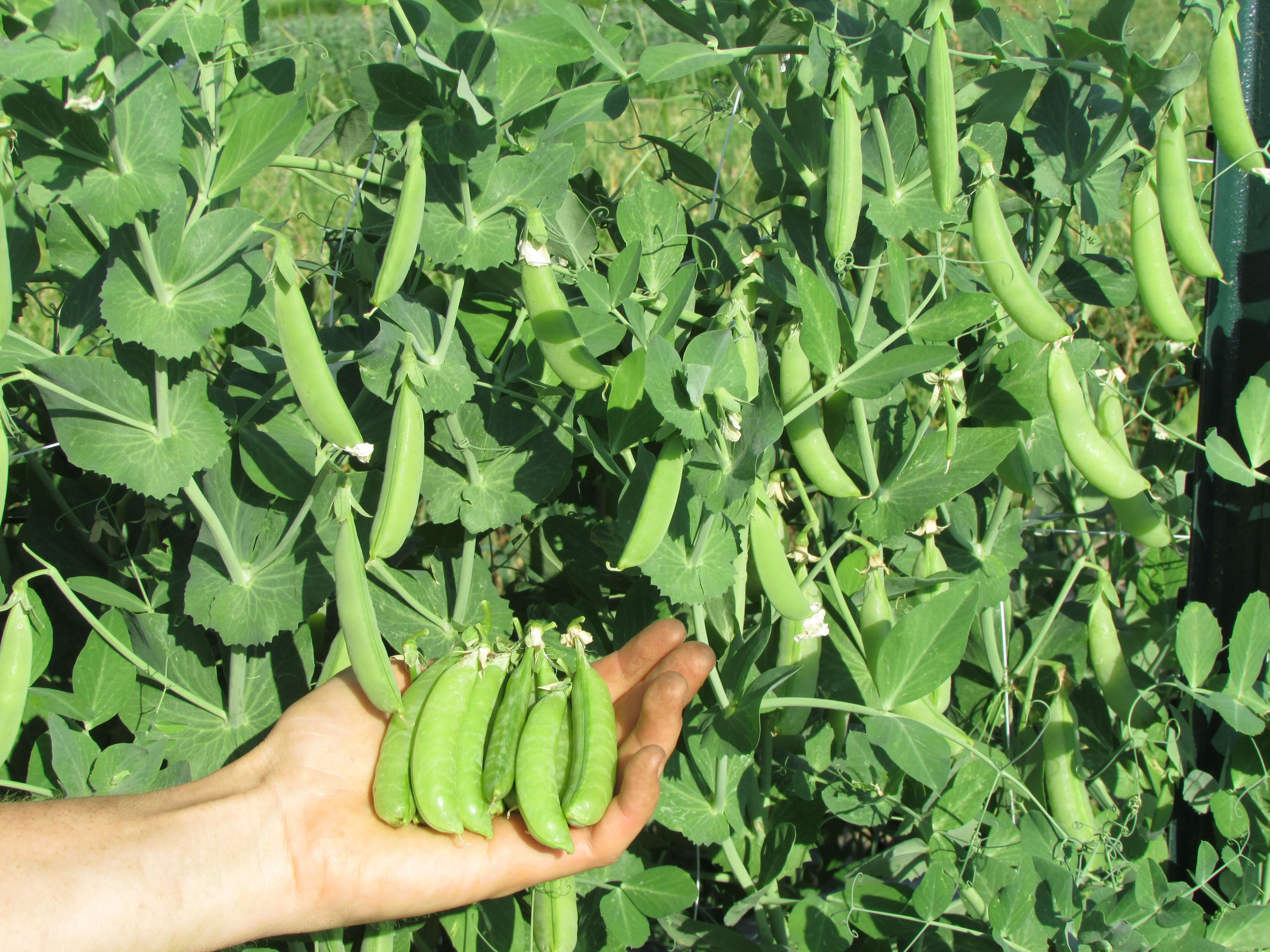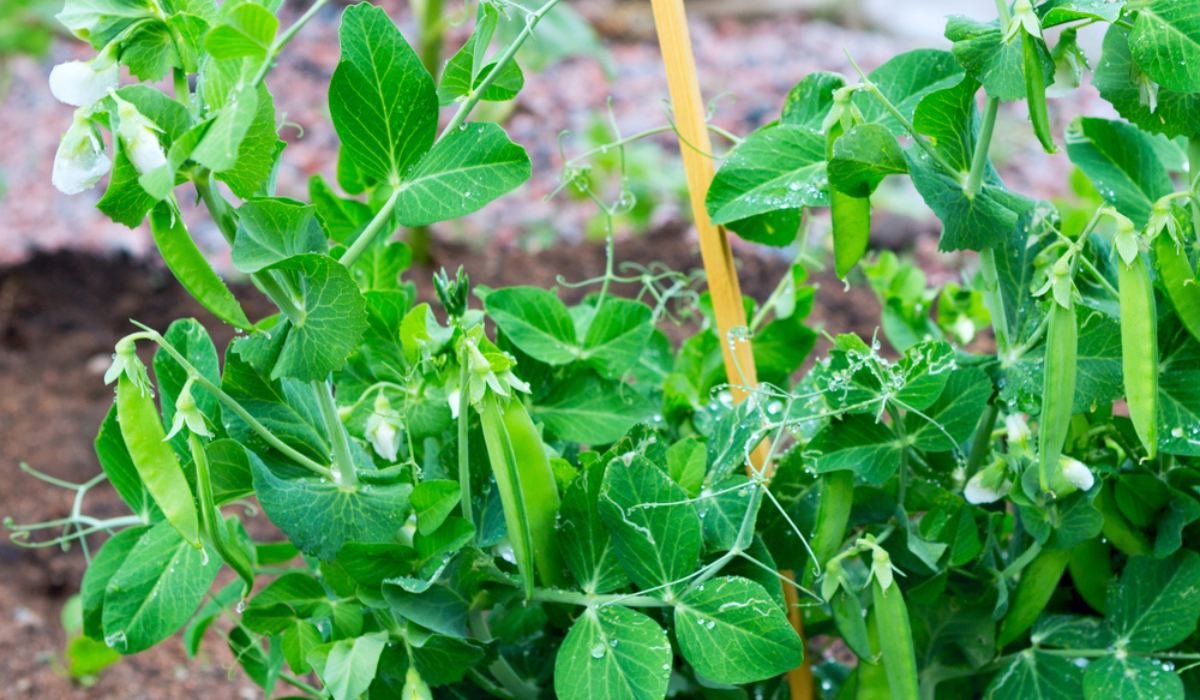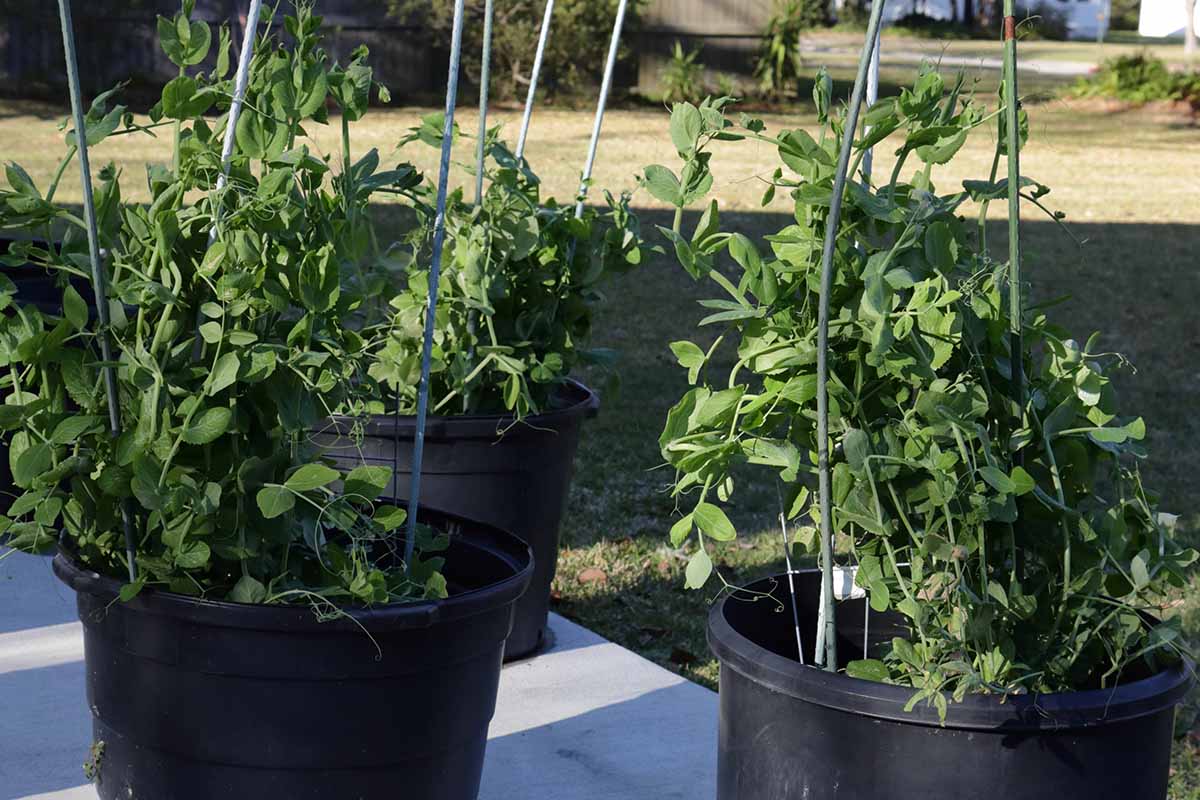Understanding the Native Habitat of Pea Plants
Pea plants, scientifically known as Pisum sativum, are native to the Mediterranean region and parts of Asia. They thrive in temperate climates with moderate temperatures, adequate moisture, and well-draining soil. In their natural habitat, pea plants grow in areas with rich soil, full sun, and a cool, moist climate. The ideal temperature for pea plant growth ranges from 40°F to 70°F (4°C to 21°C), making them a cool-season crop.
Pea plants are adaptable to various soil types, but they prefer well-draining, fertile soil with a pH between 6.0 and 7.0. They are often found growing in fields, meadows, and along roadsides, where the soil is rich in organic matter and nutrients. In these environments, pea plants can grow up to 6 feet (1.8 meters) tall, with a spread of around 3 feet (0.9 meters).
When considering where to grow pea plants, it’s essential to replicate these ideal conditions. Pea plants can be grown in a variety of locations, including home gardens, containers, and indoor spaces. By understanding the native habitat of pea plants, growers can create an environment that fosters healthy growth and maximizes yields.
In terms of specific regions, pea plants are commonly grown in areas with mild winters and cool, moist summers. They are widely cultivated in Europe, Asia, and North America, where the climate is suitable for their growth. In the United States, pea plants are grown in many states, including Washington, Oregon, and Idaho, which offer the ideal climate and soil conditions.
While pea plants can be grown in a variety of locations, they are most commonly associated with the temperate regions of the world. By understanding the native habitat of pea plants, growers can better appreciate the conditions required for optimal growth and make informed decisions about where to grow these versatile and nutritious plants.
How to Create a Pea Plant Haven in Your Garden
Creating an ideal environment for pea plant growth in your garden requires careful consideration of several factors, including soil preparation, sunlight requirements, and watering needs. By replicating the conditions found in their native habitat, you can provide your pea plants with the best possible start in life.
Soil preparation is crucial for pea plant growth. Pea plants prefer well-draining, fertile soil with a pH between 6.0 and 7.0. To achieve this, add compost or well-rotted manure to your soil to improve its structure and fertility. If your soil is heavy clay or sandy, mix in some organic matter to improve its drainage and water-holding capacity.
Pea plants require full sun to partial shade, depending on the variety. In general, they need at least 6 hours of direct sunlight per day to produce a healthy crop. If you’re growing pea plants in a container, choose a location that receives plenty of sunlight, such as a south-facing wall or a sunny patio.
Watering is also critical for pea plant growth. Pea plants need consistent moisture, especially when they’re producing flowers and pods. Water your pea plants regularly, but avoid overwatering, which can lead to root rot and other problems. Aim to provide about 1 inch of water per week, either from rainfall or irrigation.
In addition to these basic requirements, there are several other factors to consider when creating a pea plant haven in your garden. For example, pea plants are climbing plants and need a trellis or other support to grow upright. You can also use a pea plant cage or a teepee made from bamboo or other materials to provide support.
By providing your pea plants with the right conditions, you can enjoy a bountiful harvest of delicious and nutritious peas. Whether you’re growing pea plants in a container or in a garden bed, with a little care and attention, you can create a pea plant haven that will thrive for years to come.
When deciding where to grow pea plants, consider the specific growing conditions required by the variety you’re growing. Some pea plants are more tolerant of heat or cold than others, so choose a variety that’s well-suited to your local climate. With a little planning and preparation, you can grow pea plants in a variety of locations, from containers on a balcony to a garden bed in your backyard.
The Role of Temperature in Pea Plant Growth
Temperature plays a crucial role in pea plant growth, affecting germination, growth, and flowering. Pea plants are sensitive to extreme temperatures, and optimal temperature ranges vary depending on the stage of growth.
For germination, pea seeds require a temperature range of 40°F to 70°F (4°C to 21°C). Temperatures above 75°F (24°C) can inhibit germination, while temperatures below 40°F (4°C) can slow down the process. Once germinated, pea seedlings prefer temperatures between 60°F to 70°F (15°C to 21°C) for optimal growth.
As pea plants mature, they require a slightly cooler temperature range for flowering and pod formation. Temperatures between 50°F to 65°F (10°C to 18°C) promote healthy flowering and pod development. However, temperatures above 75°F (24°C) can lead to reduced flowering and lower yields.
It’s essential to note that pea plants are sensitive to frost, and temperatures below 32°F (0°C) can damage or kill the plants. In areas with frost, pea plants should be planted in the spring or fall, when temperatures are more favorable.
In regions with extreme temperatures, pea plant growth can be challenging. In areas with hot summers, pea plants may require additional care, such as providing shade or using row covers to reduce heat stress. In areas with cold winters, pea plants may need to be protected from frost using techniques such as mulching or using cold frames.
Understanding the optimal temperature ranges for pea plant growth is crucial for maximizing yields and quality. By providing the right temperature conditions, growers can promote healthy growth, flowering, and pod formation, leading to a bountiful harvest of delicious and nutritious peas.
When deciding where to grow pea plants, temperature is an essential factor to consider. Pea plants can be grown in a variety of locations, from containers on a balcony to a garden bed in your backyard. However, it’s crucial to choose a location that provides the optimal temperature range for pea plant growth.
Pea Plant Growth in Different Regions and Climates
Pea plants can be grown in various regions and climates, but their growth and productivity can be affected by extreme temperatures, rainfall, and soil conditions. Understanding the challenges and opportunities of growing pea plants in different regions can help growers optimize their yields and quality.
In temperate climates, pea plants thrive in areas with mild winters and cool, moist summers. Regions with moderate temperatures, such as the Pacific Northwest in the United States, are ideal for growing pea plants. In these areas, pea plants can be grown in the spring or fall, when temperatures are cooler and rainfall is more consistent.
In regions with hot summers, such as the southern United States, pea plants may require additional care to prevent heat stress. Growers can use techniques such as providing shade, using row covers, or planting pea varieties that are tolerant of heat. In areas with cold winters, pea plants may need to be protected from frost using techniques such as mulching or using cold frames.
In regions with high rainfall, such as the UK or Ireland, pea plants may be more susceptible to diseases such as powdery mildew or downy mildew. Growers can use techniques such as crop rotation, sanitation, and fungicides to prevent these diseases. In areas with low rainfall, such as the southwestern United States, pea plants may require additional irrigation to prevent drought stress.
Soil conditions also play a crucial role in pea plant growth. In regions with heavy clay soils, pea plants may require additional drainage to prevent waterlogged soil. In areas with sandy soils, pea plants may require additional fertilization to prevent nutrient deficiencies.
Despite these challenges, pea plants can be grown in a variety of regions and climates. By understanding the specific growing conditions required by pea plants, growers can optimize their yields and quality. Whether you’re growing pea plants in a container or in a garden bed, choosing the right variety and providing the right growing conditions can help you succeed.
When deciding where to grow pea plants, consider the specific climate and soil conditions of your region. Pea plants can be grown in a variety of locations, from containers on a balcony to a garden bed in your backyard. By choosing the right variety and providing the right growing conditions, you can enjoy a bountiful harvest of delicious and nutritious peas.
Soil Quality and Pea Plant Growth
Soil quality plays a crucial role in pea plant growth, and understanding the importance of soil pH, nutrient availability, and drainage can help growers optimize their yields and quality. Pea plants prefer well-draining, fertile soil with a pH between 6.0 and 7.0.
Soil pH affects the availability of nutrients for pea plants. A pH range of 6.0 to 7.0 allows for optimal nutrient uptake, while a pH outside this range can lead to nutrient deficiencies. For example, a pH below 6.0 can lead to manganese toxicity, while a pH above 7.0 can lead to iron deficiency.
Nutrient availability is also critical for pea plant growth. Pea plants require a balanced diet of nitrogen, phosphorus, and potassium. Nitrogen promotes leaf growth, phosphorus promotes root development, and potassium promotes overall plant health. A soil test can help determine the nutrient levels in your soil and identify any deficiencies.
Drainage is also essential for pea plant growth. Pea plants prefer well-draining soil to prevent waterlogged soil conditions, which can lead to root rot and other problems. Adding organic matter such as compost or well-rotted manure can help improve soil structure and drainage.
In addition to these factors, soil quality can also affect the incidence of pests and diseases. For example, soil-borne diseases such as powdery mildew and downy mildew can be more prevalent in soils with poor drainage or high pH levels.
When deciding where to grow pea plants, soil quality is an essential factor to consider. Pea plants can be grown in a variety of soils, but optimal growth and yields require well-draining, fertile soil with a pH between 6.0 and 7.0. By understanding the importance of soil quality, growers can take steps to optimize their soil conditions and promote healthy pea plant growth.
By providing the right soil conditions, growers can promote healthy pea plant growth and maximize their yields and quality. Whether you’re growing pea plants in a container or in a garden bed, understanding the importance of soil quality can help you succeed.
Pea Plant Growth in Containers and Indoor Spaces
Pea plants can be grown in containers and indoor spaces, providing a convenient and space-saving way to enjoy these nutritious and delicious legumes. With the right conditions and care, pea plants can thrive in containers and indoor spaces, producing a bountiful harvest of peas.
When growing pea plants in containers, choose a container that is at least 6-8 inches deep and has good drainage holes. Pea plants prefer well-draining soil, so make sure the container has a well-draining potting mix. You can also use a trellis or other support to help the pea plants grow upright.
Indoor spaces can provide a ideal environment for pea plant growth, especially during the cooler months. Pea plants prefer bright, indirect light, so a south-facing window or grow lights can provide the necessary light. Keep the temperature between 60-70°F (15-21°C) and maintain high humidity to promote healthy growth.
When growing pea plants in containers or indoor spaces, it’s essential to provide the right soil conditions. Pea plants prefer a slightly acidic to neutral soil pH, ranging from 6.0 to 7.0. You can use a potting mix specifically designed for containers or indoor plants, and add organic matter such as compost or well-rotted manure to improve soil fertility.
Watering is also crucial when growing pea plants in containers or indoor spaces. Pea plants prefer consistent moisture, but make sure not to overwater, which can lead to root rot and other problems. Water the plants when the top inch of soil feels dry to the touch, and avoid getting water on the leaves to prevent fungal diseases.
By providing the right conditions and care, pea plants can thrive in containers and indoor spaces, producing a delicious and nutritious harvest of peas. Whether you’re growing pea plants in a container or in a garden bed, understanding the specific needs of these plants can help you succeed.
When deciding where to grow pea plants, consider the specific growing conditions required by these plants. Pea plants can be grown in a variety of locations, from containers on a balcony to a garden bed in your backyard. By choosing the right variety and providing the right growing conditions, you can enjoy a bountiful harvest of delicious and nutritious peas.
Common Challenges and Solutions for Pea Plant Growth
Pea plant growers often face common challenges that can impact the health and productivity of their plants. Some of the most common challenges include pests, diseases, and nutrient deficiencies. By understanding the causes of these challenges and implementing effective solutions, growers can overcome these obstacles and achieve optimal pea plant growth.
Pests are a common problem for pea plant growers, particularly aphids, spider mites, and powdery mildew. To control pests, growers can use integrated pest management (IPM) techniques, such as introducing beneficial insects, practicing good sanitation, and using organic or chemical pesticides as a last resort.
Diseases are another common challenge for pea plant growers, including fungal diseases such as powdery mildew and downy mildew. To prevent diseases, growers can use resistant varieties, practice good sanitation, and avoid overhead watering. Fungicides can also be used to control diseases, but should be used judiciously to avoid harming beneficial insects.
Nutrient deficiencies are also a common challenge for pea plant growers, particularly nitrogen, phosphorus, and potassium deficiencies. To address nutrient deficiencies, growers can use soil tests to determine the nutrient levels in their soil and adjust their fertilization accordingly. Organic or chemical fertilizers can be used to provide essential nutrients, but should be used in moderation to avoid over-fertilization.
Other common challenges for pea plant growers include extreme temperatures, drought, and soil compaction. To address these challenges, growers can use techniques such as mulching, irrigation, and soil aeration to maintain optimal growing conditions.
By understanding the common challenges faced by pea plant growers and implementing effective solutions, growers can overcome these obstacles and achieve optimal pea plant growth. Whether you’re growing pea plants in a container or in a garden bed, being aware of the potential challenges and taking steps to prevent them can help you succeed.
When deciding where to grow pea plants, consider the specific growing conditions required by these plants. Pea plants can be grown in a variety of locations, from containers on a balcony to a garden bed in your backyard. By choosing the right variety and providing the right growing conditions, you can enjoy a bountiful harvest of delicious and nutritious peas.
Maximizing Pea Plant Yield and Quality
To maximize pea plant yield and quality, it’s essential to provide the right growing conditions, including pruning, training, and harvesting. By following these tips, you can enjoy a bountiful harvest of delicious and nutritious peas.
Pruning is an essential step in maximizing pea plant yield and quality. Remove any weak or damaged stems to promote healthy growth and encourage the plant to produce more peas. You can also trim back the tips of the stems to encourage branching and increase yields.
Training pea plants is also crucial for maximizing yields. Provide a trellis or other support for the plants to climb on, and gently twine the stems around the support. This will help the plants grow upright and produce more peas.
Harvesting pea plants at the right time is also essential for maximizing yields. Check the plants regularly for ripe peas, and harvest them when they are plump and tender. Avoid over-harvesting, as this can reduce yields and impact the plant’s ability to produce more peas.
In addition to pruning, training, and harvesting, there are several other strategies you can use to maximize pea plant yield and quality. These include using row covers to protect the plants from pests and diseases, and providing supplemental lighting to promote healthy growth.
By following these tips and providing the right growing conditions, you can enjoy a bountiful harvest of delicious and nutritious peas. Whether you’re growing pea plants in a container or in a garden bed, maximizing yields and quality requires careful attention to detail and a commitment to providing the best possible growing conditions.
When deciding where to grow pea plants, consider the specific growing conditions required by these plants. Pea plants can be grown in a variety of locations, from containers on a balcony to a garden bed in your backyard. By choosing the right variety and providing the right growing conditions, you can enjoy a bountiful harvest of delicious and nutritious peas.




:max_bytes(150000):strip_icc()/garden-vs-snow-and-sugar-snap-1403487-01-75756cadab74407c8d2db846f2f5ed8e-d8d23476bc7c4248b3fc75274c3f919b.jpg)



